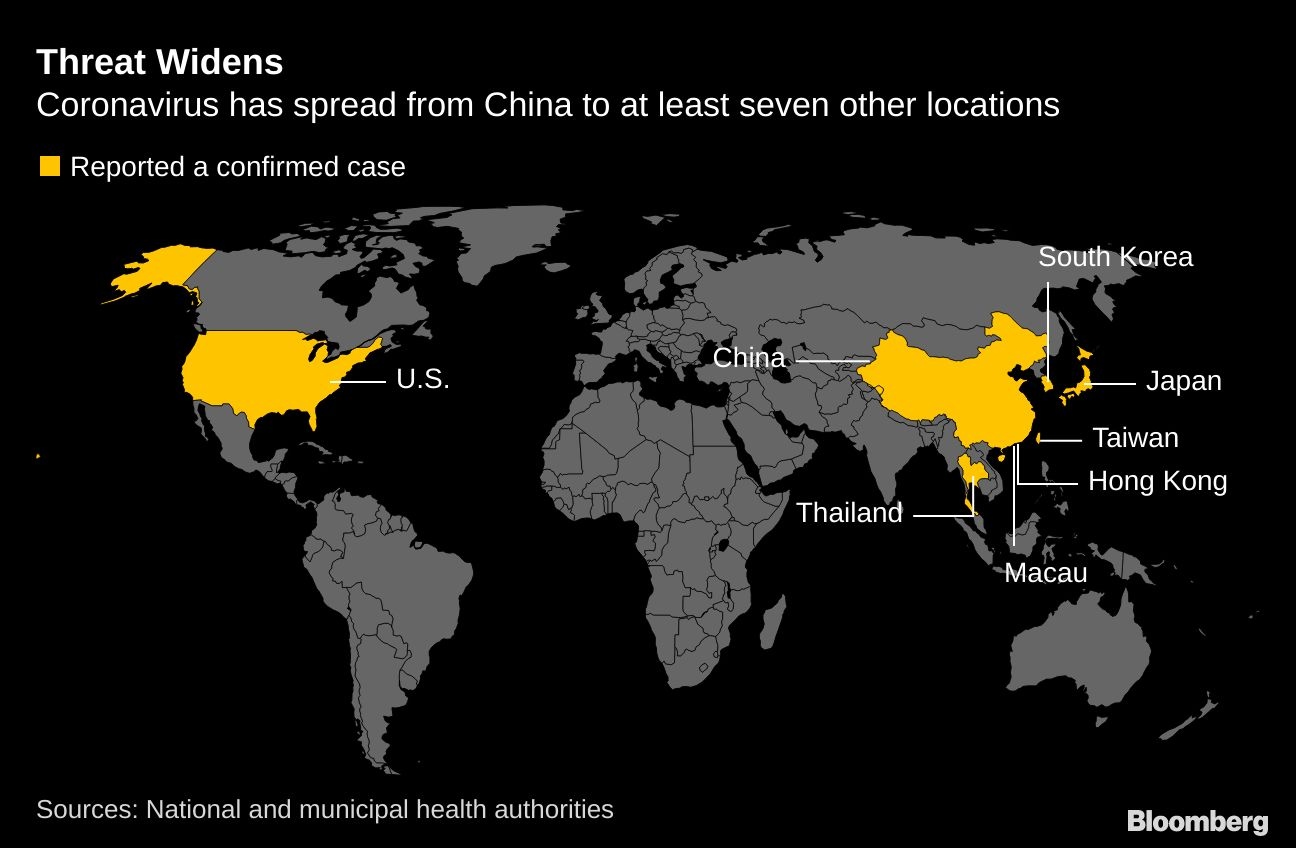Jan 23, 2020
World Health Organization opts against global alarm on coronavirus outbreak
, Bloomberg News
Lunar New Year celebrations may worsen coronavirus transmissions: Professor
China reported that deaths from a new coronavirus rose to 25 as it rushes to halt the SARS-like disease, even as the World Health Organization stopped short of calling the infection a global health emergency.
Restrictions on travel and public gatherings have been implemented in Wuhan, the city in central China where the virus was first detected, as well as in several nearby municipalities. Hong Kong and Beijing are canceling planned holiday activities, according to local officials and state media.
Pressure to contain the virus is growing as one more death was reported, with more than 650 cases confirmed. Adding to the urgency to curtail the spread is the start of Lunar New Year on Friday, when hundreds of thousands of Chinese travel across the country and abroad.
Concerns about the virus extend beyond health to its impact on the economy, with warnings that China’s fragile stabilization could be at risk. Mounting fears about the outbreak have roiled financial markets, and the Shanghai Composite Index had the worst end to a Lunar Year in its three-decade history.
Public heath experts gathered by the United Nations agency to review the situation were split over whether they should recommend declaring a public health crisis of international concern and instead opted to continue monitoring the outbreak. Tedros Adhanom Ghebreyesus, the WHO’s director-general, said he would reconvene the committee within 10 days, or at a moment’s notice should the situation take a turn for the worse.
“Make no mistake, this is an emergency in China, but it has not yet become a global health emergency,” Tedros said at a briefing in Geneva Thursday. “It may yet become one.”
The number of new cases has continued to grow within China, and patients with the infection have been found countries across Asia, with Singapore and Vietnam reporting cases while Japan reported a second patient. While most cases have remained mild, about one-fourth of those infected have developed severe disease, officials said.

Most of those who have died had other health conditions, including diabetes and heart disease, that weakened their immune systems. Symptoms include fever, cough or chest tightness, and difficulty breathing.
The virus is believed to have emerged last month in a seafood and wildlife market in Wuhan, spreading from infected animals to humans.
While the virus is moving from human to human, a situation that worries public health officials, it appears that close exposure is critical. Most cases have moved from patients to their close family members or to health-care workers who were caring for them.
It’s critical for public health officials to monitor the situation closely, said Jeremy Farrar, director of the Wellcome Trust, a London-based medical research philanthropy. It’s still not clear how the virus moves from person-to-person, when patients are infectious or how best to treat them, he said.
“This outbreak and the speed with which this new virus has spread in China and traveled across borders, is a reminder of how vulnerable we are globally to outbreaks of infectious diseases known and unknown,” Farrar said in a statement. “Travel restrictions may be important in buying time, to signal the seriousness of the situation and may help reduce the impact, but are unlikely to stop this epidemic.”
An emergency declaration by the WHO would have allowed the agency to begin coordinating government responses. It also could have recommended travel and trade restrictions to stop the spread of the infection.
The WHO has come under fire in the past for raising the alert too soon as well as too late. The last respiratory illness to trigger a public health emergency was the flu pandemic of 2009, which caused widespread alarm but ended up being relatively mild.
In 2014, by contrast, the WHO was criticized for not sounding the alarm early enough as Ebola raged through West Africa. Another outbreak of that illness last July in the Democratic Republic of Congo was also deemed to be a public health emergency, almost a year after the contagion first erupted.
Under the shadow of its mishandling of the SARS pandemic 17 years ago, China wants to show the world it’s dealing with the crisis transparently and effectively, while still struggling to understand a pathogen that is difficult to detect.
Both the Wuhan virus, known as 2019-nCoV, and SARS belong to the family of coronaviruses, so called because of their crown-like shape.
--With assistance from Jason Gale, Thomas Mulier and Michelle Fay Cortez



